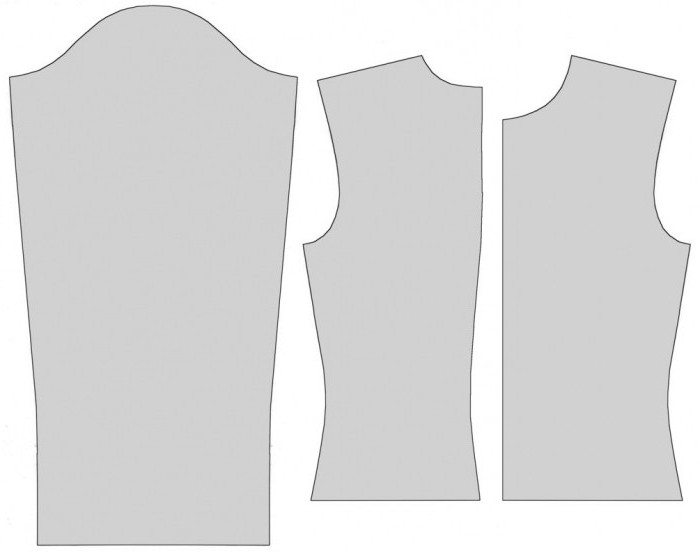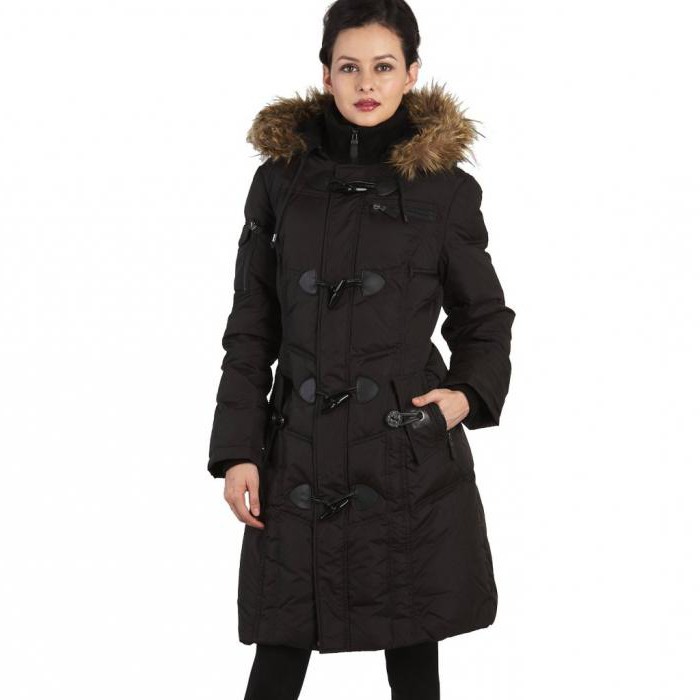All needlewomen know how to significantly save the family budget if you sew things for the family and for yourself. Sewing often costs several times cheaper, and things are better than market ones. Naturally, to achieve an excellent result, experience will be required, but even if it is not there, such a practice will not be in vain and will certainly be useful in the manufacture of other things. So, it's time to arm yourself with scissors, a sewing machine and a tape measure, purchase materials and get to work.

A little theory will allow us to understand how the construction of a pattern of a female coat occurs. In fact, there is nothing complicated in the drawing, and the process itself involves transferring the measurements taken from the figure to paper to design the product template. Therefore, a little zeal and patience - and you can enjoy the result. In many sewing publications, a ready-made pattern of a female coat is offered. Burda, for example, is one of the most popular. However, self-construction has several advantages, because it uses not standard, generally accepted measures for a certain size, but personal measurements. That is why the product is much better fit.
In this article, a female coat will be considered: the pattern by which it is sewn, and its construction, as well as materials that are best used in work.
Taking measurements
In order for the product to fit well on the figure and repeat all the bends of the body without creases and extra folds, it must be sewn taking into account the peculiarities of the physique. It is for this that measurements are made. The pattern-basis of a female coat requires the following measurements: volumes of the neck, chest, waist, hips, upper arm, solution of tucks in the chest, width of the back, height from the shoulder to the center of the chest, to the waist (along the back and in front through the chest), shoulder width , the length of the sleeve and the entire product. All these values need to be recorded and you can begin to work on the drawing.
The first step in building the foundation: mesh
Like most products, the pattern of the women's winter coat is built in a rectangle, divided into sections by additional lines. It is called the base grid. The vertical side of the rectangle should be equal to the length of the product, and the horizontal - to the measure "chest volume" + 3 cm for loose fitting. The upper limit determines the level of the shoulder. From it you need to go down to the height of the chest and draw a horizontal line in the chest area, below - the waist and even lower - the hips.
From the vertical side along the chest line on the left, you need to put aside half the width of the chest, and from the right - half of the tuck solution. From the points obtained, raise the perpendiculars. After the semi-girth of the chest should be divided into 4 parts and add 2 cm to the obtained value. The corresponding distance should be put off on the chest line from the point determining the width of the back, put a point and raise the perpendicular. Thus, the basic grid will come out, where the back zone, armhole zone and the front shelf zone are already marked. The area of the armhole along the chest should be divided in half and the perpendicular should be lowered down - this will be the border of the side seam of the product. On the basis of this grid any product is built, including a female coat. The pattern at this stage requires refinement of the details, and it can be used as a template.
The second stage of building the foundation: details
The rest of the process is to refine the details.
- In the upper corners of the rectangle, neck girth retreats and draw a neckline. On the back, deepen by 3 cm, on the front - by 7 cm.
- Shoulder sections are constructed from the obtained points. They should be beveled about 1.5 cm to the center of the rectangle.
- On the shoulder of the front shelf from the perpendicular raised from the boundary of the tuck solution, they retreat 3 cm and lower the straight line to the same point. The shoulder seam is extended by the same distance (3 cm). This will be a tuck for the chest.
- An armhole is drawn from the shoulder points to the center point, from which the side seam comes out.
- If the model does not provide for tuck tucks, then immediately move to the hips line. From the verticals of the rectangle in the corresponding line, put on ½ a measure of the circumference of the hips and set dots. Side seams, if necessary, expand from the center of the armhole to the hips. If desired, a coat can also be made a trapeze.
- If tackle tucks are provided, then the difference in the volume of the hips and the waist is determined and the resulting value is distributed into the tucks. Their top should reach the line of the chest, and the bottom should end at a distance of 5 cm from the line of the hips.

Sleeve construction
What could be a women's coat? The pattern can be built with a one-piece sleeve or with a set-in. The first option is simpler and involves extending the shoulder seam by the required amount and constructing a lower cut of the sleeve from the side seam. This is ideal for a beginner. If the minimum practice of sewing things already exists, then you can work on the set-in sleeve.
To build such a sleeve, ready-made patterns of shelves are needed. Here you will need to circle around the finished armhole. To do this, the shelf templates are folded along the shoulder and trace the cut. After it is overestimated by 1.5 cm and draw an even circle on its basis. A line is drawn along the bottom of this circle, on which the width of the upper part of the arm + 2 cm to the free fit is indicated. Next, it remains to lower down the lines for the seam of the sleeve and outline the circle in a circle, leading it to the points of the border of the width of the arm. At this stage, all the templates are ready and you can cut a female coat. The pattern of this product can be used both for warm products and for a summer cardigan. It will only be necessary to add different allowances for a free fit and a product insulation.
Modeling
The finished pattern of the female coat can be finalized. Here you can designate embossed seams, pockets, additional decorative elements, such as slats for fasteners, a double back in the area of the shoulder blades and so on. You can also think of epaulettes, a strap on the back at the waist and other elements.
Fabric selection
For coats, it is best to choose soft and warm fabrics, such as polar or cashmere. But it is worth noting that such things are often blown by the wind. Therefore, if you need a warm winter coat, then a raincoat fabric with special impregnation will be the best option, which should be duplicated with a synthetic winterizer or other insulation.